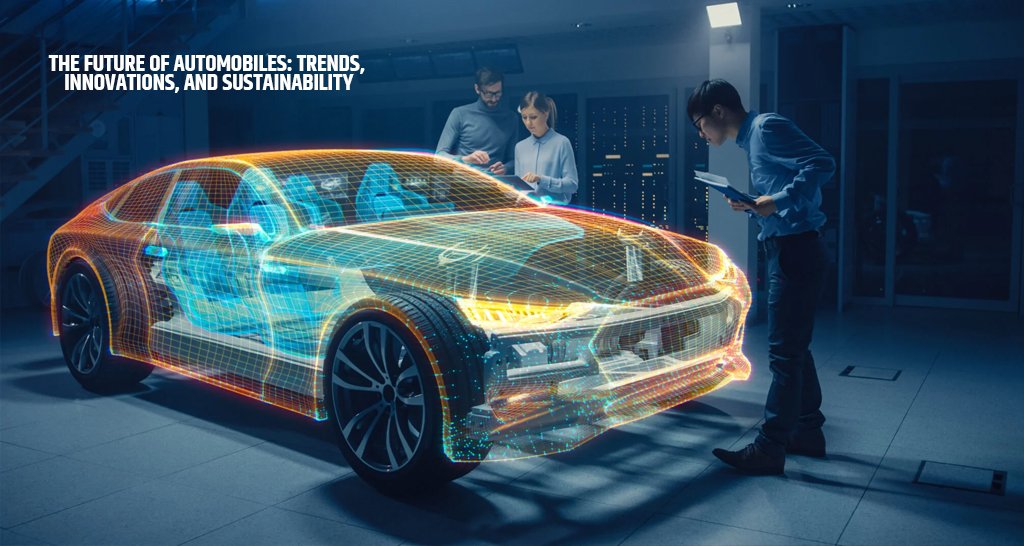Emerging Trends in the Automotive Industry
The automotive industry is experiencing a transformative phase, with several key trends shaping its future. One of the most notable trends is the rise of electric vehicles (EVs). Consumers are increasingly prioritizing sustainability, prompting automakers to invest heavily in EV technology. Manufacturers are unveiling new models that promise extended range, faster charging times, and improved battery performance. This shift towards electrification not only addresses environmental concerns but also aligns with global initiatives aimed at reducing carbon emissions. As a result, sales of electric vehicles are projected to rise significantly, reshaping market dynamics and consumer preferences.
Alongside EVs, advancements in autonomous driving technology are revolutionizing the automotive landscape. Companies are optimistically investing in research and development to enhance self-driving capabilities. These innovations promise to improve road safety, reduce traffic congestion, and provide greater accessibility for individuals unable to drive. The progression towards fully autonomous vehicles is drawing attention, as regulatory frameworks evolve to accommodate these advanced technologies. As automation becomes increasingly prevalent, a new era of mobility is on the horizon, compelling traditional automakers to adapt their strategies to remain competitive.
Furthermore, the growing popularity of car-sharing services is redefining vehicle ownership models. As urban populations swell and consumers seek more sustainable transportation options, many are opting for shared mobility solutions. This trend is indicative of a broader cultural shift towards convenience and efficiency. Automakers recognize this movement and are innovating to incorporate car-sharing capabilities into their business models, creating partnerships with technology platforms to facilitate these services. As a result, both established manufacturers and new entrants are rethinking their approach to meet changing consumer demands.
Innovations Transforming Automobile Technology
The automotive industry is undergoing a transformative phase, driven by a range of innovative technologies that are reshaping vehicle design and operation. Among these breakthroughs, advancements in battery technology have taken center stage. The development of solid-state batteries offers improved energy density and safety, promising to extend the range of electric vehicles (EVs) significantly while reducing charging times. This innovation not only enhances the driving experience but also alleviates range anxiety, a common concern among EV users.
In parallel, the integration of artificial intelligence (AI) into vehicle systems is revolutionizing safety and efficiency. AI algorithms are increasingly employed in advanced driver-assistance systems (ADAS), enabling features such as adaptive cruise control, lane-keeping assistance, and automatic emergency braking. These systems use sensors and real-time data to make split-second decisions, thereby not only enhancing driver safety but also paving the way for autonomous driving technologies. The convergence of AI with automotive technology holds great promise for mitigating accidents caused by human error, thereby contributing to safer roads.
Moreover, smart connectivity solutions are emerging as a pivotal aspect of modern automobiles. Vehicle-to-everything (V2X) communication enables vehicles to exchange information with each other, infrastructure, and the cloud, facilitating a more efficient flow of traffic and reducing congestion. This technology supports real-time navigation updates and can even provide drivers with predictive maintenance alerts, enhancing the overall user experience. With smart connectivity, the automotive landscape is becoming increasingly integrated with smart city initiatives, embodying a holistic approach to urban mobility.
These transformative innovations are not only pushing the boundaries of what vehicles can achieve but also setting the stage for a more sustainable, efficient, and user-friendly future in the automotive sector. The continued exploration and implementation of these technologies will undoubtedly shape the next generation of automobiles.
Sustainability and the Automotive Sector
The shifting landscape of the automotive sector increasingly emphasizes sustainability as a paramount objective. Traditional combustion engine vehicles have been identified as significant contributors to environmental degradation, primarily due to their greenhouse gas emissions and reliance on fossil fuels. As consumer awareness of climate change intensifies, automotive manufacturers are compelled to reevaluate their operational practices and product offerings, prioritizing eco-friendly alternatives.
The transition towards sustainability is embodied in the rising popularity of electric vehicles (EVs) and hybrids, which produce lower emissions compared to their traditional counterparts. These vehicles not only mitigate air pollution but also align with global efforts to decrease dependency on non-renewable energy resources. To complement this shift, manufacturers are investing in sustainable manufacturing processes that minimize waste, reduce energy consumption, and utilize recycled materials. This holistic approach not only meets consumer demands for greener products but also enhances the overall efficiency of production systems.
The role of policies and regulations cannot be overstated in fostering a sustainable automotive environment. Governments around the world are implementing stringent emission standards and offering incentives for both manufacturers and consumers to transition to greener options. These regulations are designed to accelerate the adoption of innovative technologies, such as battery recycling and improved energy efficiency, further propelling the automotive industry towards a sustainable future.
A crucial aspect of sustainability in this sector is the concept of a circular economy. This model encourages the reimagining of the life cycle of automotive products, from design to end-of-life management, emphasizing reusability, refurbishment, and recycling. As the automotive industry moves toward these sustainable practices, it not only addresses environmental concerns but also positions itself as a leader in the global push for sustainable development.
The Future of Mobility: Challenges and Opportunities
The automotive industry is at a pivotal point, transforming in response to emerging technologies and societal demands. However, as the sector gears up for a sustainable and innovative future, it faces a number of significant challenges. One of the primary hurdles is regulatory in nature. Governments worldwide are increasing regulations concerning emissions and safety, which can impede the rapid development of new automotive technologies. Striking the right balance between innovation and compliance is essential for manufacturers aiming to create vehicles that meet the new standards.
In addition to regulatory challenges, infrastructure deficiencies pose a significant barrier to the adoption of electric vehicles (EVs). The existing charging network is insufficient to support a full transition to EVs, causing anxiety among potential users. Investment in robust and accessible charging infrastructure is critical to encourage consumer confidence and support sustainability in mobility. Alongside infrastructure, government incentives may play an important role in stimulating EV adoption, but their design must be nuanced to effectively address consumer concerns.
Public perception also presents a formidable challenge, particularly regarding new technological advancements like self-driving cars. Despite the promise of enhanced safety and efficiency, skepticism remains among consumers regarding the reliability of autonomous vehicles. Gaining public trust in these innovations will require robust educational campaigns and transparent communication about the benefits and risks associated with self-driving technology.
Despite these challenges, exciting opportunities arise as the automotive industry evolves. New market segments, such as shared mobility solutions and electric ridesharing services, present avenues for growth. Additionally, collaborations between traditional automakers and technology companies can lead to breakthroughs in software, AI, and connected vehicle technology. These partnerships not only foster innovation but also facilitate the creation of vehicles that meet the demands of modern consumers.



